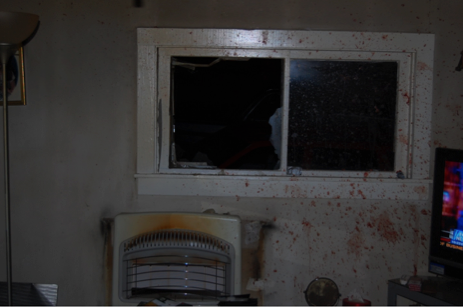To some, this is an ordinary crime scene photograph. But, to an expert with and Interpretation training, knowledge and experience, these photographs reveal much more. Although highly recognized, Bloodstain Pattern Analysis and Interpretation (BPAI) is NOT generally utilized in the investigation of most crime scenes. SRI, however, realizes that BPAI is essential to the reconstruction of a crime scene and applies this technique to assist with determining “what happened.” This technique can be effective to refute or corroborate statements made by an individual concerning the alleged crime. Are the subject’s statements consistent with the forensic evidence? When properly interpreted, the following information can be acquired through bloodstain examination:
- Directionality
- Angle of Impact
- Type of force involved
- Direction from which that force was applied
- Nature of the object used
- Approximate number of blows
- Relative positions of victim(s), suspect(s), and related objects
- Sequencing of associated events
- Occasionally, even which hand was used to deliver the blows
- Where events occurred
- Where subjects were within the crime scene
- Possibly if items were missing from the crime scene
- Accuracy of witness statements based on forensic evidence and science










Thanks for helping me understand how much information bloodstain pattern analysis can reveal in a crime scene. My brother is a police investigator and he has been handling crime scenes more often now. I’ll be sure to share this article with him and suggest he starts looking for a company that does bloodstain pattern analysis for future reference.